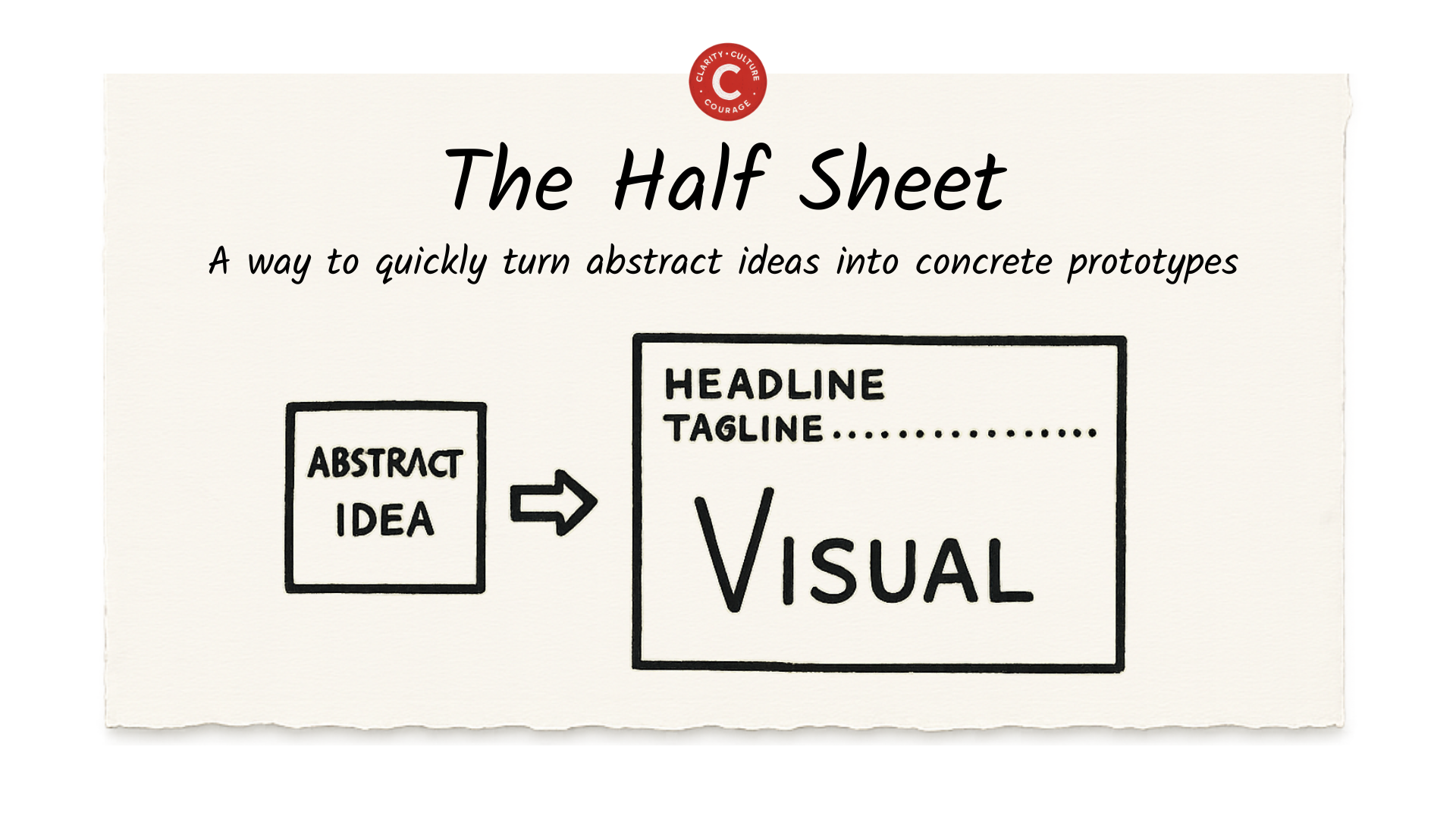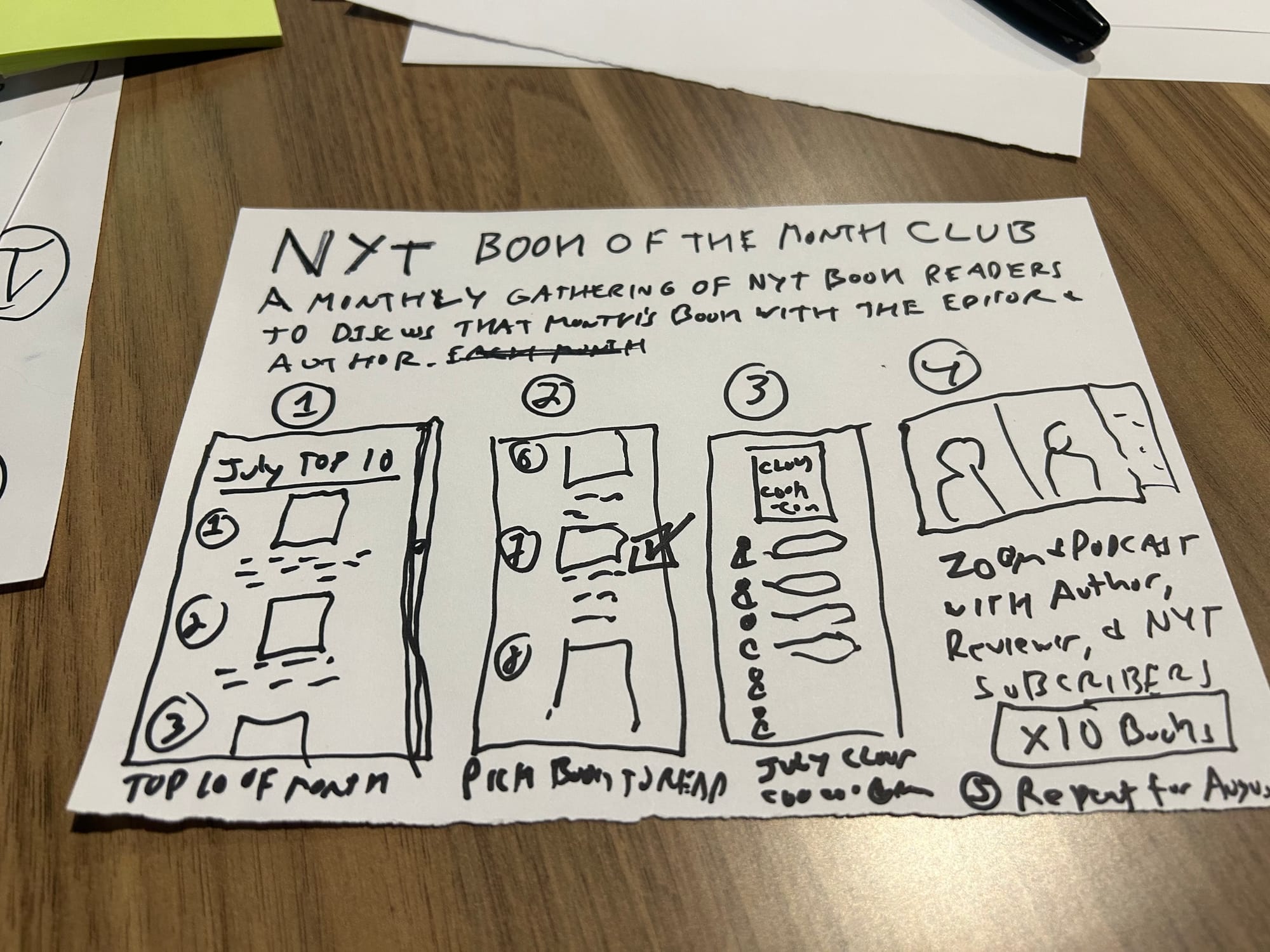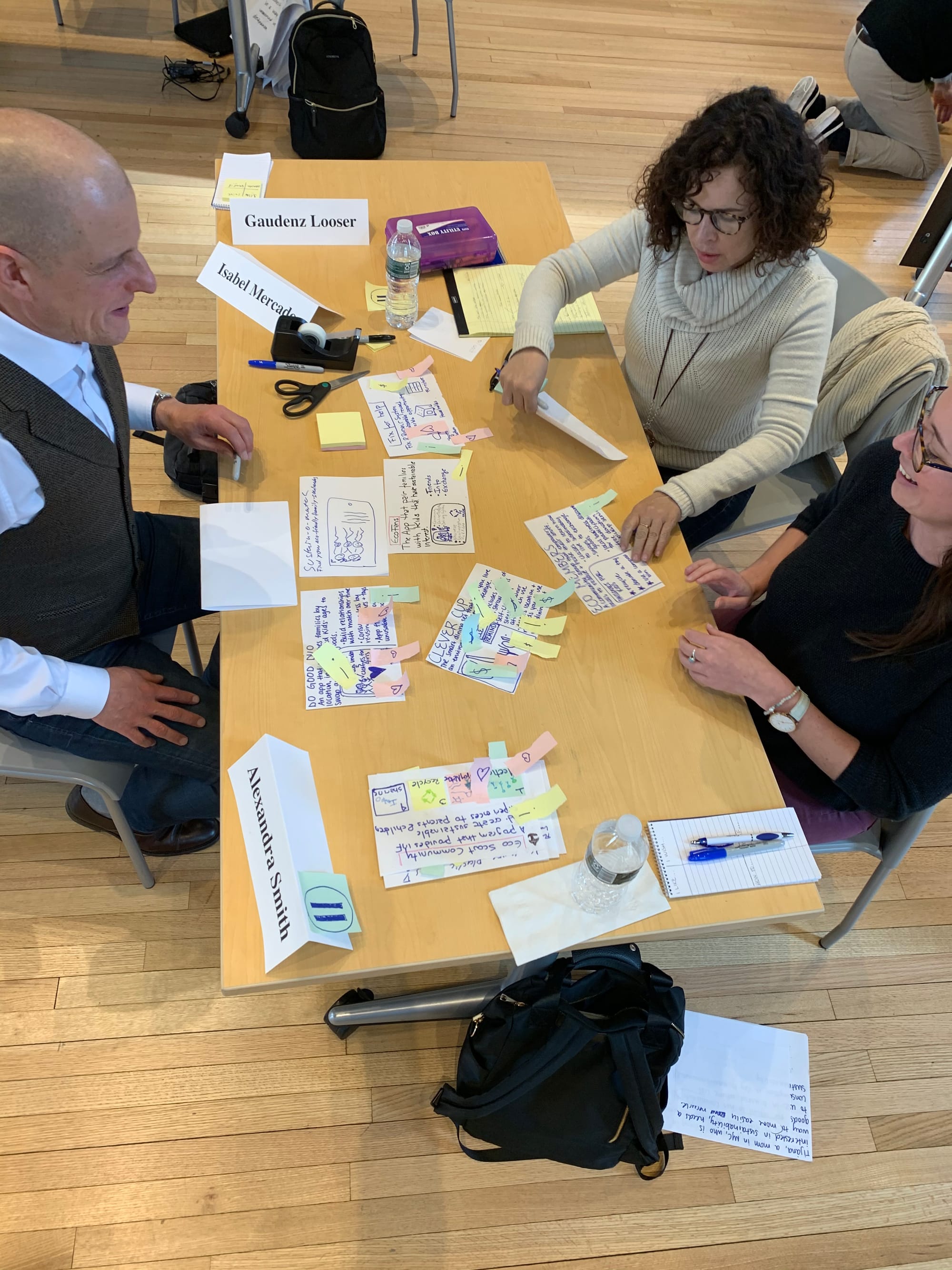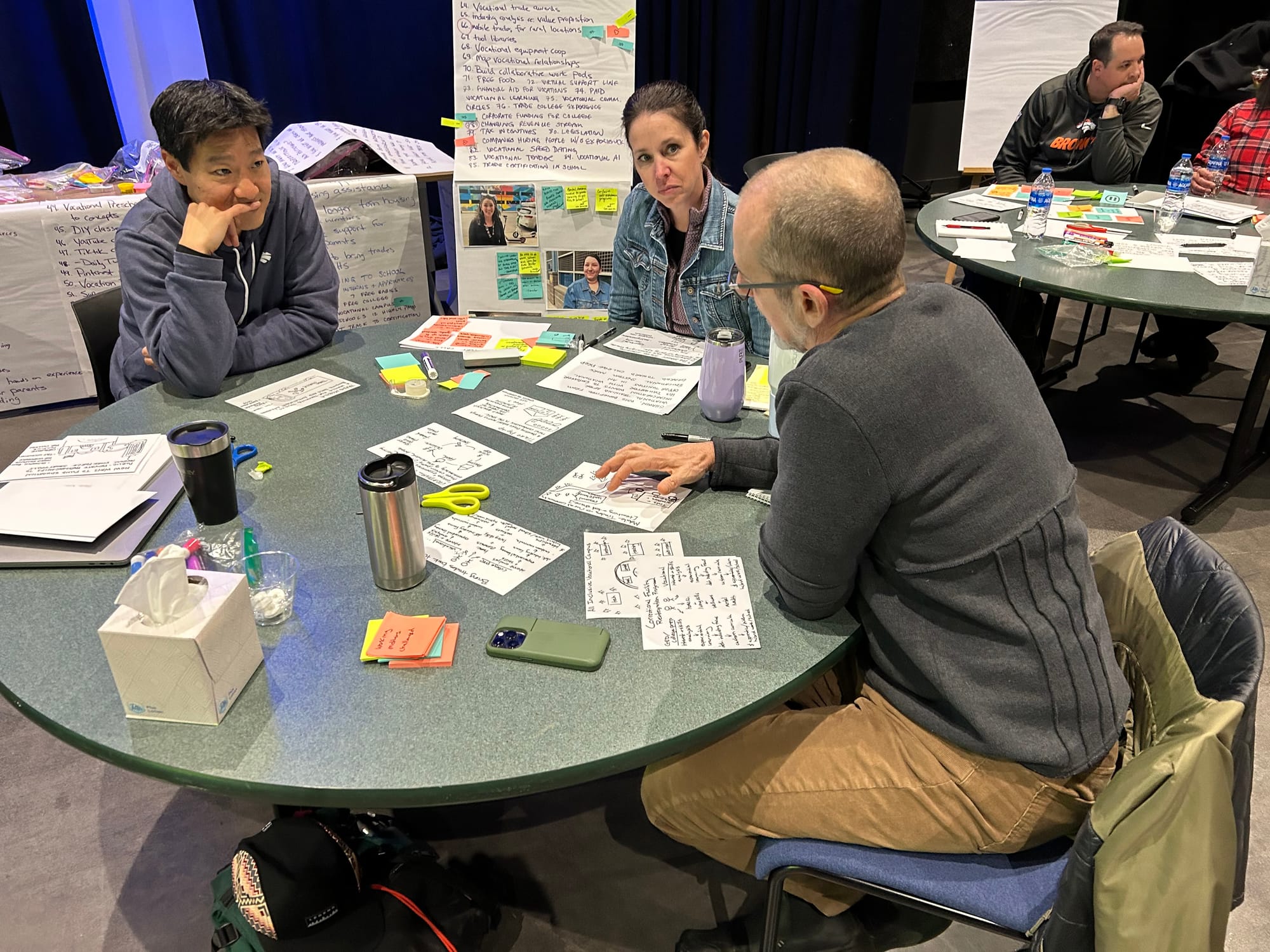Welcome to The Idea Bucket
This is the first post of The Idea Bucket — a weekly newsletter for leaders building subcultures of innovation. Each issue features one visual framework supporting one act of leadership to help you build a culture where your team can experiment, learn, and grow.
I’m building this in public — sharing the tools and frameworks I use every day with coaching clients. My point of view is clear: to help my clients strengthen their innovation leadership, and to equip them with tools they can use to turn their teammates into leaders, too.
Building a great place to work isn’t easy — especially in times of constant change. But it’s some of the most important work a leader can do.
With each framework, I hope the leaders I work with feel more confident answering the question:
Why should someone follow you?Leadership is a craft honed through continuous acts. Each week, you’ll receive one new framework — shared in Half Sheet form. I’ll explain the idea, show you how to apply it, and invite you to share what you try.
Over time, The Idea Bucket will become a growing, glanceable wall of frameworks — something you can draw from to get unstuck, stay inspired, and keep building your own leadership playbook.
And maybe, one day, it will become the foundation for the leadership book my clients and students keep asking me to write. And if it doesn’t? That’s okay too. Let’s embrace building in public — and failing fast.
I’m excited to have you on this journey.
For this first post, we’re going a little meta — because before you can understand what an Idea Bucket is, you need to understand its atomic unit: The Half Sheet.

The Half Sheet
A way to quickly turn abstract ideas into concrete prototypes
When you have an idea — a scribble on a whiteboard, a shower thought, or something you just can’t stop thinking about — get it out of your head and into a persistent, concrete form.
Grab a blank sheet of computer paper.
Fold it in half.
Tear or cut it into a horizontal 16:9 frame.
Pick up a Sharpie.
Now sketch:
- A clear headline
- A sticky tagline
- An imperfect visual
That’s it. No decks. No slides. No hiding in the gray areas.
The constraints are the magic.
There’s no room for hand-waving or abstraction — just the essence of an idea, made tangible. Something your team can react to, remix, or reject.
And format matters.
Half Sheets are always horizontal, drawn in Sharpie, and include all three elements. That’s because they’re designed to live side-by-side with other Half Sheets — in an Idea Bucket that builds up over time.
You should be able to tape a Half Sheet to the wall, step back a few feet, and read it at a glance. That’s how ideas get concrete. And that's how they stay visible, allowing intentional serendipity to happen.
 A Half Sheet with a very imperfect visual. We all can sketch!
A Half Sheet with a very imperfect visual. We all can sketch!The Power of The Half Sheet
The Half Sheet isn't just for creatives. (And yes — anyone can do an imperfect sketch.)
It’s a tool that helps even the most self-described “non-creative” teams get aligned, move faster, and collaborate better. It’s not about artistry — it’s about clarity and culture.
Here’s what The Half Sheet unlocks:
1) Clarity
Most of us don’t realize our ideas are too abstract to act on — until we try to sketch them.
The moment you force an idea into three parts — a headline, a tagline, and a visual — you start to see what’s real and what’s vague. It’s the fastest way to sharpen your thinking and expose where the idea needs work.
2) A Prototyping Mindset
Most teams wait too long to test ideas.
The Half Sheet turns that abstract concept you’re probably a little too confident in into something testable with users today. It’s the very first stage of prototyping — low stakes, fast, and unfinished on purpose.
The Half Sheet gives your team permission to be rough early, so you can learn faster and waste less time perfecting the wrong thing.
3) Detachment From The First Idea
The first idea is almost never the best idea — but we’re wired to get attached to it.
The Half Sheet breaks that attachment. Once it’s up on the wall, it’s not your idea anymore — it’s an idea.
The format gives it structure — but also distance, so you can move forward without ego. When every idea has a Half Sheet, it becomes easier to compare, remix, or let go.
 Sulzberger Fellows discussing their Half Sheets during Venture Design Bootcamp.
Sulzberger Fellows discussing their Half Sheets during Venture Design Bootcamp.4) Alignment
It’s common for teams to think they agree — until they sketch.
When I teach The Half Sheet, I usually do it right after a brainstorm. The team has used The Post-It Note Voting Method to narrow 100 ideas down to a handful — maybe they’ve circled something on the whiteboard like: “Build a dating app.”
They think they’re aligned. Then I ask each team member to create their own Half Sheet version of that same idea — individually, before discussing.
When they come back together, two things happen:
- They realize they weren’t on the same page at all.
- They now have a set of concrete creative interpretations and new directions to explore.
The Half Sheet surfaces assumptions, reveals hidden perspectives, and creates alignment by making ideas visual — not just verbal.
5) Momentum
Talking can trap teams in loops.
The Half Sheet breaks the loop. It moves a team from abstraction to iteration — not by locking in a decision, but by giving everyone something tangible to react to.
Ideas stop swirling. They start evolving.
Your Challenge This Week
Try The Half Sheet — first on your own, then with your team.
Step 1: Practice solo
Pick any idea that’s been on your mind — a whiteboard scribble, a sticky note from a brainstorm, or something you think is already clear to your team (but might not be).
Grab a blank sheet of paper.
Fold it in half (or cut it into a horizontal 16:9 frame).
Use a Sharpie to sketch:
- A clear headline
- A sticky tagline
- An imperfect visual
Try it. Don’t overthink it. Just sketch.
Feel what shifts when the idea becomes visible.
What suddenly becomes clear? What gaps appear?
That’s natural — you’re building to think.
 Participants in Venture Design Bootcamp discuss their Half Sheets after sketching them
Participants in Venture Design Bootcamp discuss their Half Sheets after sketching them
Step 2: Try it with your team
Choose one idea your team thinks it’s aligned on — a next step, product iteration, strategy, or initiative.
Have each person independently create a Half Sheet version of that same idea. Same format: headline, tagline, visual.
Then come back together, post the Half Sheets side by side, and compare:
- What do you notice?
- Where were you aligned — and where weren’t you?
- What assumptions surfaced?
- What new possibilities emerged?
You’ll likely discover that what felt like consensus was actually a set of diverse interpretations and exciting directions — and that’s the point.
The Half Sheet isn’t just about sketching. It’s a tool for spotting assumptions, sharpening clarity, and creating momentum — together.
If you try this, I’d love to hear what happened. Send a photo, a quick story, or even just your favorite quote from the discussion. You can post in the comments below or reach me at [email protected].
Next Week
Next week, I’ll show you how to organize, remix, and activate your growing wall of Half Sheets — by introducing the framework that gives this newsletter its name: The Idea Bucket
About This Newsletter
The Idea Bucket is a weekly newsletter and growing archive featuring one visual framework, supporting one act of leadership, that brings you one step closer to building a culture of innovation.
It’s written by Corey Ford — executive coach, strategic advisor, and founder of Point C, where he helps founders, CEOs, and executives clarify their visions, lead cultures of innovation, and navigate their next leadership chapters.
Want executive coaching on this framework or others? Book your first coaching session. It's on me.
.png)




